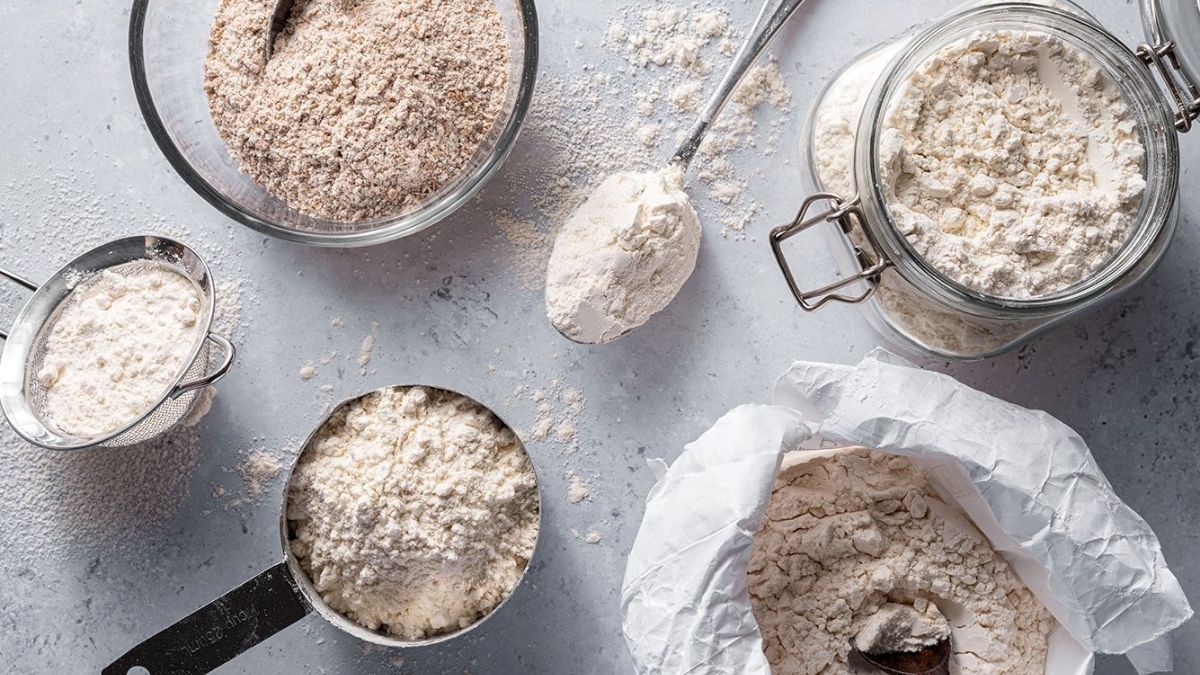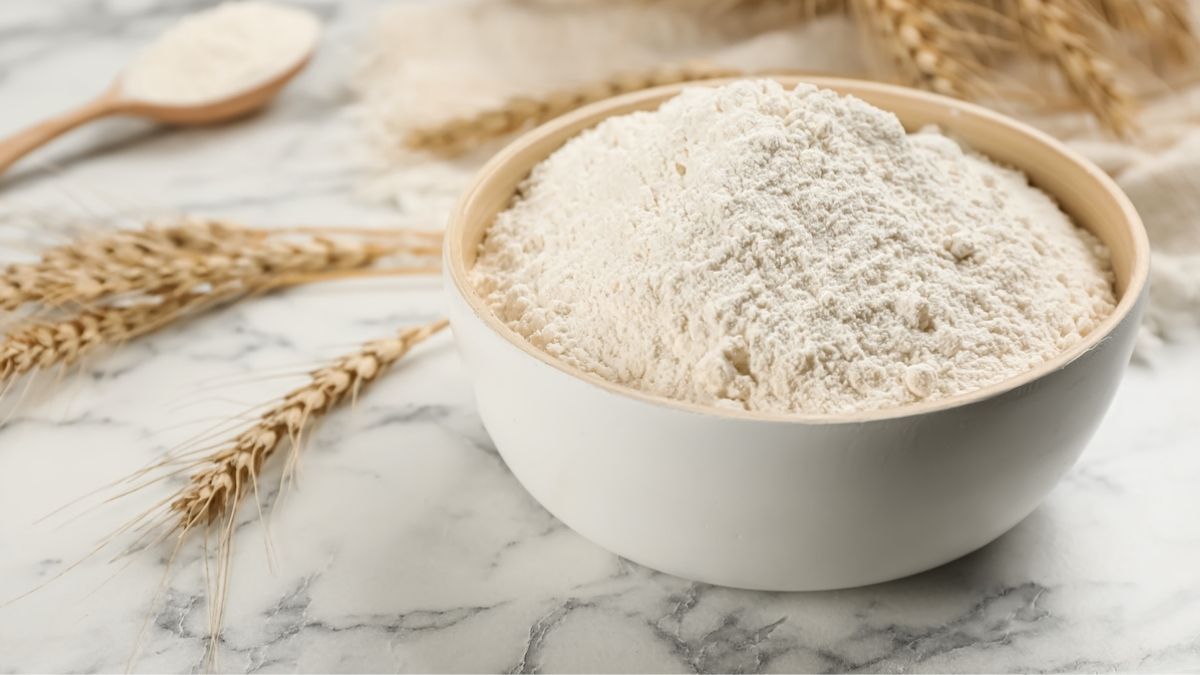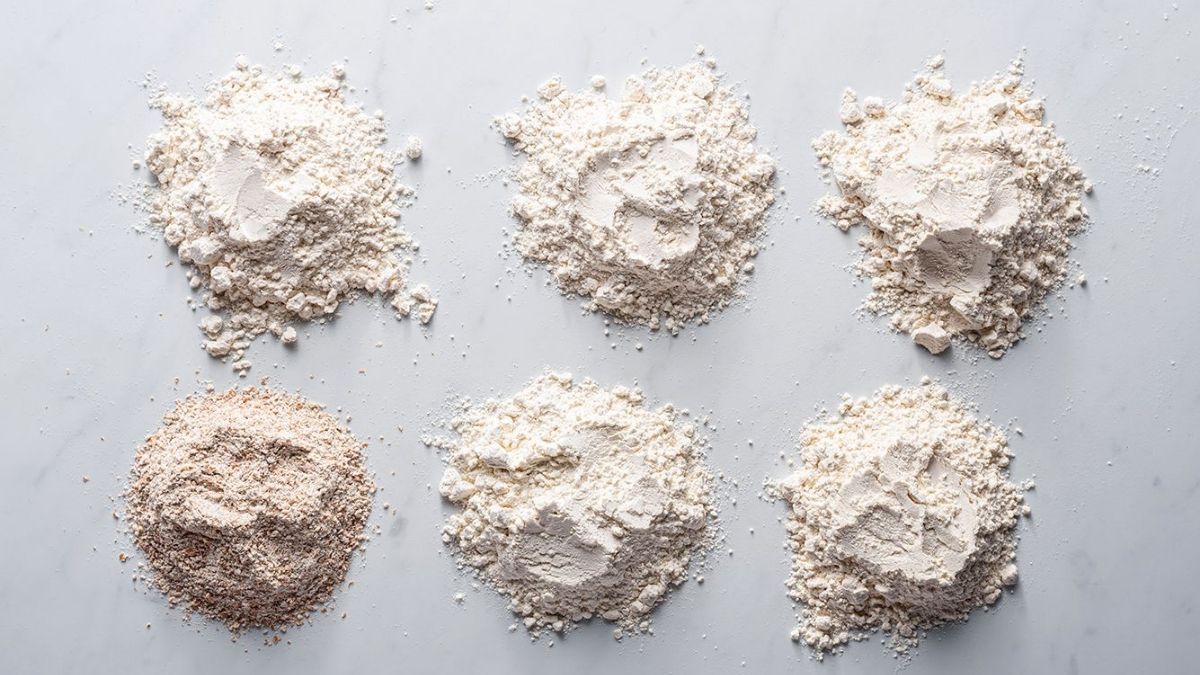Most of the time, wheat flour is used in baking. Different kinds of wheat flour can be told apart by how much gluten they have. Wheat flour is a fine powder made by grinding wheat into a meal that people can eat. They can be told apart by how much gluten they have, their colour, the parts of the grain they use, and the type of wheat they are made from. Bread, cakes, cookies, and most other baked goods can’t be made without wheat flour.
A Guide to Different Types of Wheat Flour
Since most recipes call for all-purpose flour, we might not know how many different kinds of wheat flour there are. Depending on what you are making, you will need either semolina, bread flour, or cake flour. Like all-purpose, cake, and pastry flours, some flours can be used for the same things. Most of the time, the choice comes down to personal preference. If you know what each flour is and what it is used for, you will be able to tell if you can use one flour instead of another in a recipe.
Wheat Flour Basics
Gluten is a protein found in wheat, and it gives baked goods their shape. When the dough is worked, these glutens get stronger and stretchier. Strong flours are made from types of wheat that are hard and have a lot of protein, and there is more gluten in them. Weak flours are made from soft, low-protein wheat and have less gluten.
All-Purpose Flour
All-purpose flour has about 12 percent gluten, which is in the middle range, and this makes it a good middle-of-the-road flour that can be used for a wide range of baking, from crusty bread to cookies to fine cakes and pastries. All-purpose flour is a good all-around flour, but most professional bakers don’t use it. Most professional bakers use either bread flour, cake flour, or pastry flour, depending on what they are baking.
Bread Flour
Bread flour is a strong flour, which means that it usually has between 13 and 14 percent gluten. When you pick up a handful of bread flour, it will feel rough and look slightly off-white. Bread flour makes crusty bread, rolls, pizza dough, and other foods with similar textures. About 5 ounces, or 140 grammes, is how much one cup of bread flour weighs.
Cake Flour
Cake flour is made from soft wheat and has about 7.5 to 9 percent gluten. Its grains are much smaller, and its colour is much whiter than bread flour. It is best for soft cakes and pastries because it is fine and soft. One cup of cake flour that has been sifted will weigh about 3.5 ounces (99 grammes).
Pastry Flour
At about 9 to 10 percent gluten, pastry flour is stronger than cake flour. It can be used to make biscuits, muffins, cookies, pie doughs, and yeast doughs that are not as stiff, and it looks slightly less white than cake flour. One cup of pastry flour that has been sifted will weigh about 3.5 ounces or 101 grammes.
Self-Rising Flour
Self-rising flour is a strange thing. It is just regular all-purpose flour to which baking powder and salt have been added. Even though it’s supposed to be easy, it’s not. The main problem is that you can’t control how much baking powder it has. Also, the baking powder in the flour will quickly lose its ability to make things rise if you store it in your pantry. Unless you have no other choice, you should probably avoid this kind of flour.
Whole Wheat Flour
There are two kinds of whole wheat flour: 100% whole wheat flour and white whole wheat flour. Red wheat grain that has been hulled is used to make 100% whole wheat flour. It has more nutrients and fibre than all-purpose flour. In general, it makes bread and baked goods that are heavier and last less long than all-purpose flour. Whole wheat flour is often mixed with all-purpose flour to make baked goods lighter and help them rise better. White whole wheat flour is made from hulled white spring wheat. Compared to 100% whole wheat flour, it has a milder taste and a lighter colour.
What is Wheat Flour?
Parts of the wheat grain are ground up to make wheat flour. The grain is made up of three main parts:
- The endosperm, or protein/starchy part
- Germ, the rich in protein/fat/vitamin part
- Bran, the fibre-rich part
Only the endosperm is used to make white flour. The germ and bran are in brown flour, and all three parts are in whole grain flour. After each piece has been taken apart, it is ground into a fine powder. White flour is naturally a yellowish colour, but it is often bleached or mixed with chemicals that break down oxygen to make it white.
Wheat can be put into different groups based on when it is grown (spring or winter), its colour, whether it is “hard” or “soft,” how much protein it has, and how much of a certain protein called gluten it has. Hard wheat, usually a bronze colour, has more gluten than soft wheat, usually a light golden colour.
What are the Varieties of Wheat Flour?
Gluten is something that comes naturally in wheat. Baked goods have shaped because of the protein in them. When you knead the dough, glutens form, and the dough gets more elastic. Hard, high-protein wheat is used to make strong flour, and there is more gluten in them. Weak flour is made from softer, lower-protein wheat, and it has less gluten.
There are some wheat flours, including:
- All-purpose flour
- Bread flour
- Cake flour
- Pastry flour
- Self-rising flour
- Whole wheat flour
What are the Uses of Wheat?
Most people who cook at home can’t do without flour. It can be used to make pancakes, bread, baked goods, and more. It can also be used to make a roux or to thicken sauces. Flour is also used to coat foods like cutlets and fried chicken. Last, flour is an important part of making pasta. Wheat has been the most important cereal crop since the 1800s. It is used to make white bread, pastries, pasta, and pizza. Wheat was brought to America by the first English colonists. It quickly became the main cash crop for farmers, who sold it to people in cities and people who sent things abroad.
What does it Taste Like?
It would help if you didn’t eat raw flour. Flour comes straight from the farm, so it hasn’t been treated to kill germs. If there are any bacteria in the flour, they will die when the food is cooked. White flour doesn’t smell, but whole wheat flour might smell like nuts. Whole wheat flour gives these baked goods a nutty taste, makes them firmer, and gives them a rich brown colour. Most health-conscious home cooks would probably prefer to use whole wheat flour instead of all the white flour in yeast and quick bread recipes, but a product with whole wheat flour will not turn out well.
Is Wheat Flour a Maida?
Maida is a white flour made from wheat from the Indian subcontinent. It is refined, bleached, and finely ground, so it looks like cake flour. Maida is a common ingredient in fast food, baked goods like pastries, bread, sweets, and traditional flatbreads. Maida is a white flour made from wheat from the Indian subcontinent. It is refined, bleached, and finely ground, so it looks like cake flour.
Maida is a common ingredient in fast food, baked goods like pastries, bread, sweets, and traditional flatbreads. Atta, also called wheat flour, is a simple flour made by grinding whole wheat grains. It comprises all three parts of a wheat grain: the germ, the endosperm, and the bran. Only the endosperm of whole wheat grains is used to make maida, also called refined flour. Maida, also known as all-purpose flour, is very refined, as the name suggests.
Conclusion
Many other flours can be used instead of wheat flour, and gluten sensitivity or intolerance is why people need to switch flours. Some of the things that can be used instead of wheat flour are soy flour, wheat germ, cornmeal, oat flour, spelt flour, and quinoa flour. What you use instead of flour will depend on the recipe, how you like your food to taste, and what is available.


